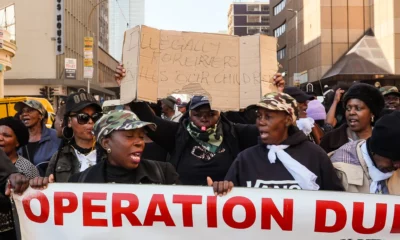In the quiet hours of the morning, before the school rush begins and while the suburbs are still asleep, a journey unfolds. It’s a journey made by thousands of Zimbabwean women, traveling to homes across South Africa to cook, clean, and care for children. They have left their own families behind in search of a livelihood, becoming the invisible backbone of countless South African households.
But what is the reality of the “greener pastures” they seek? How much do these essential workers truly earn for their labour?
The Face of the Modern Domestic Worker
To understand the earnings, one must first understand the workforce. Domestic work in South Africa is a massive, predominantly informal sector, accounting for about 6.5% of the national workforce. It is a field almost entirely made up of women.
A recent annual survey by SweepSouth, a platform connecting domestic workers with employers, provides a startling demographic snapshot. The survey found that a clear majority59%of the domestic workers on their platform are from Zimbabwe. South African nationals make up 37%, with other neighbouring countries filling the remainder. These are typically women in the prime of their working lives, aged between 26 and 41.
The Pay Cheque: Above Minimum Wage, But With a Catch
On paper, the law is clear. The national minimum wage (NMW) for domestic workers is set at R28.79 per hour. The SweepSouth report reveals a surprising average: domestic workers on the platform actually earn more than this.
The data shows that South African domestic workers on the platform earn an average of R36.64 per hour, while their Zimbabwean counterparts earn slightly less at R33.35 per hour.
This seems like positive news, but the headline figure hides a more troubling reality. When you look at individual workers, the picture fractures. A staggering 46% of all domestic workers on the platform still earn less than the legal minimum wage. This means that for nearly half, the legal protection is just words on a page.
The Monthly Reality: A Story of Two Figures
Translating these hourly rates into a monthly income tells the real story of survival. The SweepSouth report indicates that overall, domestic workers take home between R3,105 and R5,242 per month.
Consider the lower end of that scale: R3,105. This is the money that must cover rent, food, transport, and, for Zimbabwean workers, the crucial remittances sent back home to support children, parents, and extended family. In a city like Johannesburg, this is a profound exercise in budgeting and sacrifice.
The higher figure of R5,242, while more livable, is still a testament to a life of careful moderation, far from the narrative of abundant opportunity.
The story of the Zimbabwean domestic worker in South Africa is not one of simple numbers. It is a story of resilience in the face of an informal economy, of the delicate balance between legal rights and practical reality, and of the immense contribution of a community of women whose work, though often unseen, keeps the wheels of daily life turning.



























